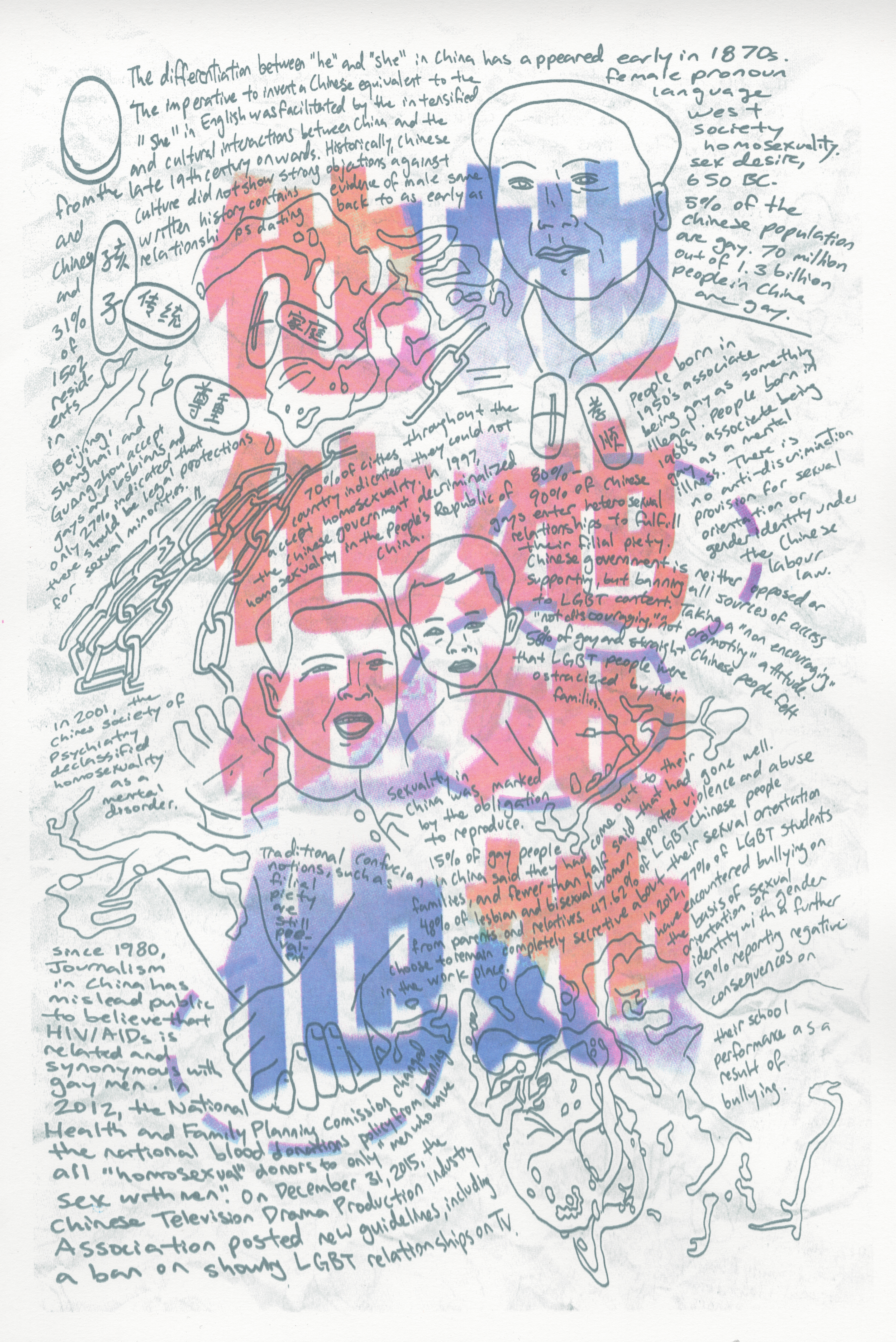TA (“he” and “she”)
Le Lin
TA (“he” and “she”), 2017
CMYK screen-print on Stonehenge paper, 15” x 20”
Design, Concordia University
The culture of language in China is explored in depth in Le Lin’s TA (“he” and “she”). The character 他 (pronounced as tā) served as a gender-neutral pronoun throughout much of Chinese history. 他 is composed of the left "human" radical: 人, 亻, and in contemporary Chinese is specifically associated with male he/him pronouns. With the first Western women's rights movement came a push to separate the “he” and “she,” to symbolize female independence and individuality. The government, pressured by this burgeoning Western influence, thus created a new character 她 (also pronounced as tā), with the left “woman” radical: 女. Over the past few years, an increasing number of Queer, Trans, Intersex, and Gender Non-Conforming (QTI/GNC) people have started reconstructing the original TA pronoun, and reclaiming TA as their own source of identity. Comparable to they/them pronouns in the English language, TA has recently developed as a renewed expression of people outside the traditional binary, despite the intense government censorship of LGBTQ+ existence and culture.
Using layered printing techniques to illuminate Chinese LGBTQ+ suppression,
Lin exposes the damages done by the government’s silencing efforts. The
bottom layer of print has warped and crumbled writings with statistics on
the government’s persecution. On the top layer of print, Lin draws themself
and their father, representations of the AIDS crisis, and Chairman Mao
Zedong, all illuminating the harm done by China’s discriminatory practices
and efforts to conceal important issues of gender and sexual orientation.
The work highlights the systemic control the government seeks to have on its
language and its people, and the rejection of such control by the LGBTQ+
community.


